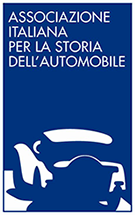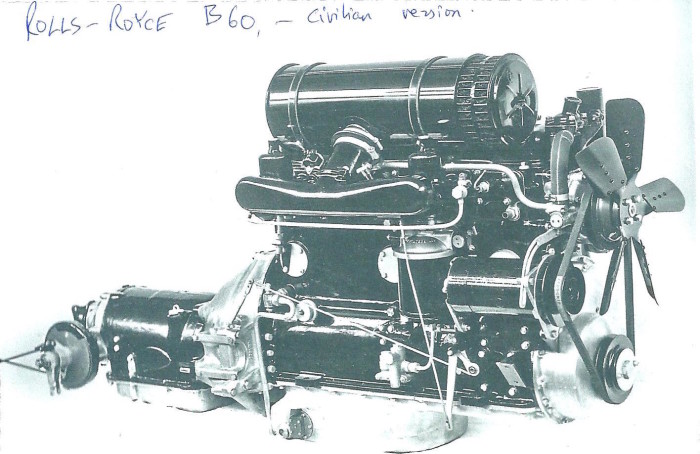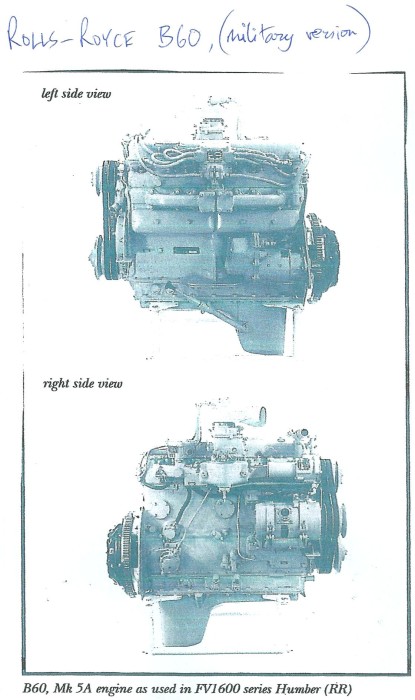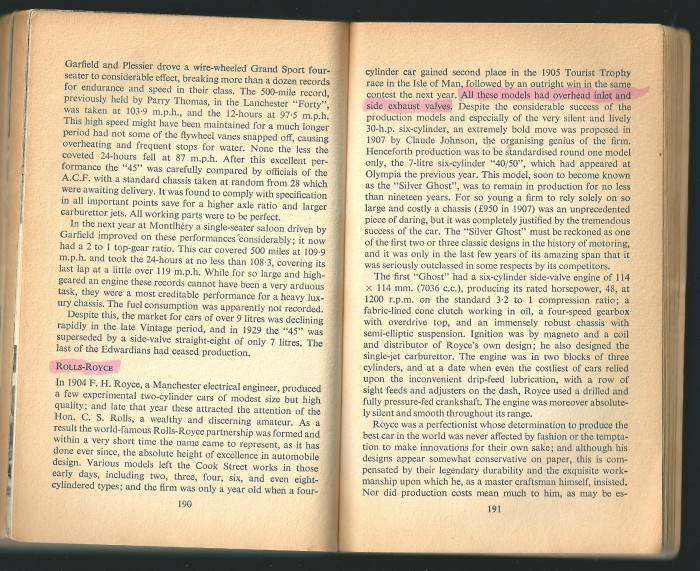Motori con una inusuale disposizione delle valvole.
Articolo pubblicato il 28-04-2016
NICKY ARMSTRONG SEGNALA CHE NEL NUMERO DI RUOTECLASSICHE DI APRILE E’ PUBBLICATO UN ARTICOLO SULLA ROLLS ROYCE SILVER WRAITH IN CUI E’ MENZIONATA LA DISPOSIZIONE DI VALVOLE IOE DEL MOTORE (F-head engine). CI FA PIACERE CHE QUESTO SOGGETTO SIA PORTATO IN EVIDENZA NELLA STAMPA SPECIALIZZATA PIU’ DIFFUSA DOPO CHE NE AVEVAMO DIBATTUTO IN QUESTA COLONNA.
ARMSTRONG OSSERVA ANCHE CHE L’ARTICOLO PARLA DI QUESTA DISPOSIZIONE COME UN RITORNO A QUELLA ADOTTATA DALLA CASA INGLESE AGLI INZI DEL SECOLO XX. IN REALTA’ SAPPIAMO CHE NON VI ERA STATA INTERRUZIONE NELLA PRODUZIONE DI QUESTI MOTORI, COME SI PUO’ LEGGERE NEGLI INTERVENTI PRECEDENTI (qui sotto).
Nonostante la cessazione ufficiale della produzione di autovetture, lo stand O.M. al Salone dell’Automobile del 1934 presentava un nuovo modello in quattro esemplari: due berline, una trasformabile ed uno chassis nudo. Si trattava di una vettura completa in ogni dettaglio, quindi a priori non di una partecipazione di testimonianza. Come la vecchia “Superba”, la vettura portava anch’essa un nome dannunziano: Alcyone.
Il motore era un sei cilindri di circa 2190cc, di buona potenza massima, con una disposizione di valvole quasi unica, con le valvole di aspirazione in testa e quelle di scarico laterali, una soluzione che permetteva l’utilizzo delle valvole O.M. di grande diametro ed era teoricamente favorevole al rendimento termico del motore.
Nel libro O.M. (Fondazione Negri, 2013) scrissi che “si parla di solo altri due esempi conosciuti in tutta la storia della automobile, dei quali nessuno entrò in produzione”.
Un lettore mi ha fatto recentemente osservare che questo tipo di motore fu usato dalla Rolls Royce dal 1904 fino al 1986! La disposizione era denominata “IOE”, inlet over exhaust, e il motore tipo B60 che la adottava fu usato per decenni anche per uso militare e montato sulle berline Silver Shadow Mark I e II.
Penso che aver riportato acriticamente l’affermazione di cui sopra da un articolo scritto da un noto e rispettato storico italiano dell’automobile non costituisca una scusa sufficiente e mi scuso per questo. Evidentemente non ho interpretato che egli si riferiva probabilmente alle automobili italiane senza dirlo.
La domanda: sono noti altri esempi di vetture il cui motore ha questa caratteristica disposizione delle valvole? (esclusi i veicoli industriali, per cui la risposta affermativa è nota)
Despite having officially ceased the production of motorcars, the O.M. displayed in the Salone dell’Automobile of 1934 a new model in four examples: two saloons, a convertible and a bare chassis. It was a complete car in every detail, and it did not look, in principle, having been made just to prove that O.M. could still build motorcars. As did the old “Superba”, the new car had been christened in d’Annunzio’s vein: Alcyone.
The engine was a 6-cylinder of a capacity of about 2190cc; it had a decent maximum power and a peculiar layout with side exhaust and overhead inlet valves.
This solution made possible the use of the O.M. valves of large diameter and was theoretically favourable to the thermal efficiency of the engine.
I wrote in the book O.M. (Fondazione Negri 2013) “it seems that there are only two other known examples of this layout in automobile history, and none of them went into production”.
A reader of this book has recently remarked to me that Rolls Royce used this valve layout (IOE) from 1904 until 1986! Its engine type B60 had been used for decades also for military use besides being mounted in the Silver Shadows Mark I and II.
I think that having uncritically reported what had been written by a wellknown and respected Italian motoring historian is not enough to be justified. Clearly he was referring to the Italian car manufacture but without saying it and I have misinterpretated.
The question is: Are there other known motorcars that went into production with a IOE valve layout? (industrial vehicles are known to exist).







Mi permetto di precisare che il motore Rolls-Royce a sei cilindri a cui si riferisce l’articolo fu realizzato durante la guerra in versione a quattro, sei e otto cilindri: un progetto modulare pensato soprattutto per impieghi militari. Ad esempio il quattro cilindri fu usato in gruppi elettrogeni, piccoli veicoli fuoristrada e impianti di messa in moto di motori aeronautici.
Dal punto di vista automobilistico, il sei cilindri fu utilizzato inizialmente nel primo dopoguerra sui seguenti modelli: Bentley Mk VI e la sua evoluzione R Type, e sulla parallela Rolls-Royce Silver Dawn -per la prima volta un modello Rolls-Royce derivava da quello Bentley.
Nel 1955 fu utilizzato sul nuovo modello Silver Cloud (e Bentley S Type e S Type Continental), mentre veniva preparato il nuovo V8 in alluminio che nel 1959 equipaggiò la Silver Cloud II e Bentley S2, mettendo fine alla linea dei sei cilindri RR. Negli anni ’60 una versione ridotta a quattro litri fu adottata per la Vanden Plas 4 Litre R, versione di lusso di una grande berlina tre volumi Austin.
Il quattro cilindri fu brevemente utilizzato sulla Austin Champ, mentre l’otto cilindri fu utilizzato sul modello più esclusivo mai realizzato, la Phantom IV, prodotta in soli diciotto esemplari e venduto solo a Capi di Stato.
Scusate la pedanteria!
Nicky Armstrong ci invia il seguente commento:
I am afraid I have to disagree with some of the statements made above. If you check out Bart Vanderveen’s “Historic Military Vehicles Directory,” (the “bible” of military vehicle enthusiasts,) you will see that no British Army Vehicles were fitted with Rolls-Royce “IOE” engines during WWII, neither “soft skin” logistical vehicles or AFVs, (Armoured Fighting Vehicles.) Large numbers of fighter aircraft and MBTs (main battle tanks) ran on Rolls-Royce “Merlin,” “Griffon” and “Meteor” engines but these were all V12 OHV (overhead valve) engines, not IOE units. (General Pétain used his own personal Rolls-Royce at Verdun during the First World War.)
No “small off-road vehicles” were built in Britain before or during the last war. The first British vehicle to answer that description was the Mk 1 Land Rover which appeared in 1948, powered by Rover’s own version of the IOE engine. I am surprised to hear about the “aircraft-engine starting-devices.” Rolls-Royce engines were all fitted with starter motors so only slave batteries were used on the airfields and these were pulled about on trolleys by the ground crew.
The letter describes the engine of the 1955 Mk 1 Rolls-Royce Silver Cloud as the six cylinder version of a “modular” engine type with 4, 6 and 8 cylinder versions, “realizzato durante la Guerra.” I would normally translate realizzato as “built” but perhaps only “developed” was intended; in any case no range of Rolls-Royce modular engine types existed during the war. The book “Every Cloud has a Silver Lining” by Davide Bassoli, describes the Silver Cloud engine as “an evolution of the B60 series, an in-line six-cylinder unit of 4,887cc, similar to that used for the last R-type Continental,” but in fact it was simply a four year stop-gap solution while the V8 engine was being prepared. Davide goes on to say that the original design for this six cylinder engine type was executed in 1922 by Frederick Henry Royce himself. A Rolls-Royce engineer, Harry Grylls, revealed in 1963 that the “distance between the bores” (not the gap, centre to centre,) measurement of the B series engines respected accurately the traditional 4.15 inches established in 1919 for the 50hp engine of the Silver Ghost. Nevertheless, the swept volume of the Silver Cloud engine was already 631cc more than the standard B60 as supplied to the British Army.
The first vehicles to drive on the road powered by a B series Rolls engine were two lorries, an Albion and a Leyland, fitted with the 8 cylinder version in the second half of the 1940s. The press launch and series production of these engines began in 1948 and, according to Pat Ware, the last B series engine blocks were manufactured for the Ministry of Defence in the 1990s, nearly 50 years of production! The total number of B series engines supplied to the Ministry of Defence comfortably exceeds 40,000 units and this figure does not include all the engines made for civilian fire-fighting vehicles or mobile cranes and as static power generators or boat engines amongst many other applications including, of course, car engines.
Your letter mentions the 18 “Phantom IV” model Rolls Royce cars fitted with the 230hp version, the B81. This installation replaced a drastically down-sized version of the Meteor engine, which had given 600 hp in a WWII Comet Cruiser tank! Most of my information on these engines comes from Pat Ware’s book: “In National Service.” Pat was helped by three Rolls-Royce engineers (see attached photos) to produce the book and he states categorically that the F60 engine of the BMC “Vanden Plas R” model was not a B-series. “Van den Plas” was once a famous coachbuilder but this particular car had the Italian designed Farina body of the Austin Westminster, some luxury internal fittings and a six cylinder Rolls-Royce engine.
You mention a few of the vehicles that used the B-units but the Ware book gives a much longer list. The B40 four-cylinder engine was most frequently fitted in the Austin “Champ” and it was the first version to cease production in the early 1960s. This unit was often used as a light power generator and to work the hydraulics on the bridge-layer version of the Meteor-powered Centurion tank. It was also fitted in some early Land Rovers but the extra weight reduced its off-road capabilities. The “Champ” itself was twice as expensive as a Land Rover but the off-road performance was not as good. The B60 engine was a great success in the Army for scout cars and other light transport vehicles in areas where light armour saved lives. Three of these are the Daimler “Ferret” and the two versions of the Humber one tonner, un-armoured for transport or as a radio van, or armoured and commonly known as “The Pig,” very popular with the soldiers in Northern Ireland. Lots of the un-armoured vehicles were hastily converted into “Pigs.” Lightweight torsion bar suspension and a practically silent engine allowed it to creep about the lanes and fields on nocturnal patrol duties. The B80 had an impressive list of customers, not all of them military, only the first seven: The “Saladin,” “Saracen” and “Stalwart” from Alvis, the GKN “Trojan”, the Vickers “Abbot,” the Leyland “Martian” plus the Thorneycroft trench-digger. The Alvis models were 6 x 6 armoured cars, basically modern replacements for the American-built Staghound and Greyhound models. The Saladin carried a 76mm fast-firing gun in a revolving turret, the Saracen was an armoured personnel carrier and the Stalwart an amphibious all-rounder which replaced the American DUKW. Many thousands of these vehicles were sold to the British Army but they were also exported. The “Trojan” and the “Abbot” were tracked vehicles, the first an armoured personnel carrier, a successor to the war-time “Bren-carrier,” the second a self-propelled 105mm gun. The Leyland “Martian” replaced the diesel engine Scammell Pioneer as an artillery tractor or heavy recovery vehicle, (not as a tank-transporter,) even though it consumed huge quantities of fuel.
The major civilian role for the B80 engine was as an airfield fire-fighter, usually built by Douglas, Alvis or Thorneycroft. Fire-fighting vehicles do not cover very many miles but when they are called on they have to move very quickly, so heavy fuel consumption was not a problem. Many years passed before diesel engines were considered to be suitable for this sort of application. The moral of the B-series tale is that Britain’s military experts had given the country a highly advanced and very expensive set of defence vehicles, only to discover too late in the day that commercially developed models would have done the same job at half the price.
Il basamento del motore Rolls-Royce B40, debitamente modificato e fuso in alluminio, anziché in ghisa, fu adottato dalla Vanwall per la sua vettura di Formula 1 (si veda il volume “Vanwall” di Denis Jenkinson e Cyril Posthumus, pagg. 48 e 52). Una ben curiosa conversione, per un motore nato per impieghi militari, ma che dimostra la qualità del prodotto (e ci ricorda la “povertà” dei mezzi disponibili anche in Formula 1 negli anni Cinquanta!)
Ringrazio Nicky Armstrong e sono ben contento di essere corretto e bacchettato. È la prima volta che trovo tutte le informazioni su questi motori e sul loro utilizzo, fino ad ora c’erano poche note e leggende a margine della storiografia ufficiale della Rolls-Royce.